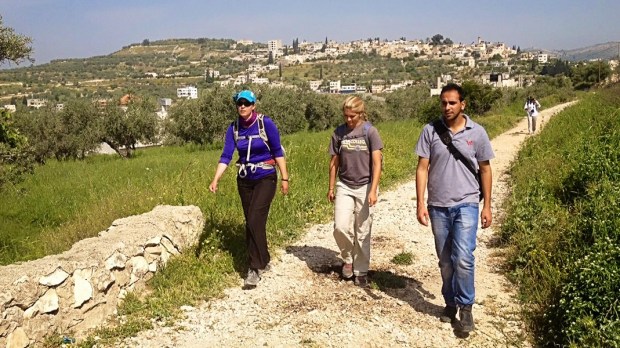Lenten Campaign 2025
This content is free of charge, as are all our articles.
Support us with a donation that is tax-deductible and enable us to continue to reach millions of readers.
Professional negotiation mediator William Ury, who has worked with conflicts in the Middle East, says in his TED Talk that if “terrorism is basically taking an innocent stranger and treating them as an enemy whom you kill in order to create fear,” then its opposite is “taking an innocent stranger and treating them as a friend whom you welcome into your home, in order to sow and create understanding or respect, or love.”
In a nutshell, the opposite of terrorism is hospitality. It’s not a word we tend to take seriously — it makes me think of parties and clean towels for your guests, not world peace. Ury and his colleagues took this idea seriously, though, and the Abraham Path came to be. It’s a supremely simple idea with a very complicated execution. Ury explains how he and some others attempted to “retrace the footsteps of Abraham, […] from his initial birthplace in the city of Urfa in Southern Turkey, Northern Mesopotamia.” He recounts how they walked through Harran, where Abraham’s journey began, went through Syria and even into Aleppo, visited Damascus, Jordan, Jerusalem, Bethlehem, and finally Hebron, where he’s buried.
It would hardly be possible to retrace the exact steps that, 4000 years ago, Abraham took, but the specific details aren’t the point. The route is meant to be cultural, not historical. Their mission is to “‘dust off the footsteps’ of an ancient journey made by Abraham, a man known as ‘the Friend of God,’ who is remembered for his legendary welcome and kindness toward strangers, a tradition alive to this day in the Middle East and across the world.” Jews, Christians, and Muslims alike hold Abraham in high esteem, and remember in particular his hospitality, his holiness, and his friendship with God. The Abraham Path Initiative stresses that “This ancient journey is a thread that binds humanity together, and a tangible reminder that no matter what divides us, what unites us is far, far greater.”
So in theory, it’s a powerful idea, but is it practical? Is it dangerous and difficult? Well, almost nobody travels the whole path; it’s too long, and goes through too many areas of different geography and political climate. The path is divided into subsections, so that you can choose what you’re physically up for. Is it safe? That depends on the region, but in general, with the right precautions, and a good local tour guide, it can be, even for women, who aren’t encouraged to travel alone. The site provides extensive information about what to bring, and what to prepare for, everything from violent storms to wild dogs. It’s not for the faint of heart.
It’s not just the theory that’s powerful. The Abraham Path is also bringing tourism and economic opportunities to the people along the route. After all, the travelers need guides, rooms to stay in, supplies and food along the way. Ury tells the story of Um Ahmad, a partially blind mother of seven, who’s been able to support her family by cooking for the travelers. She told him, ‘You have made me visible in a village where people were once ashamed to look at me.’” It’s not just an impressive concept. The path is bringing real change to the lives of real people.
You don’t have to go to the Middle East to participate. Ury talks about how cities are starting to establish virtual Abrahamic Paths. “In Cincinnati, for instance, they organized a walk from a church to a mosque to a synagogue and all had an Abrahamic meal together. It was Abraham Path Day. In São Paulo, Brazil, it’s become an annual event for thousands of people to run in a virtual Abraham Path Run, uniting the different communities.” The whole point of the path is to remind vastly different people of their common values and goals, and that spirit isn’t limited by geography or physical ability.
The Abraham Path reminds us all, whatever we believe, that it’s not just the big things bring change. Forging cultural connections, fostering hospitality, and just the simple act of human beings walking together have a substantial, if overlooked, effect on this chaotic world.

